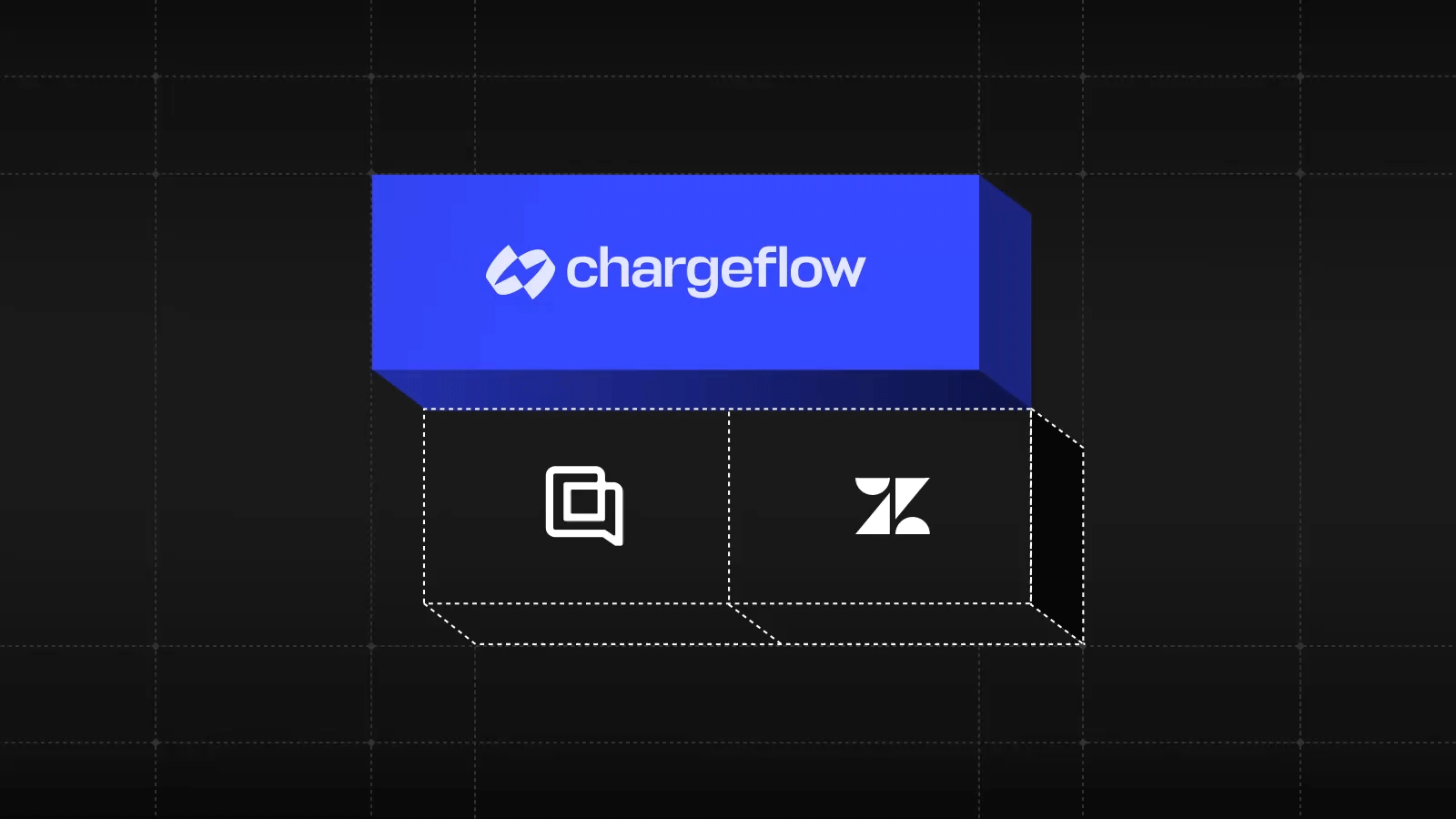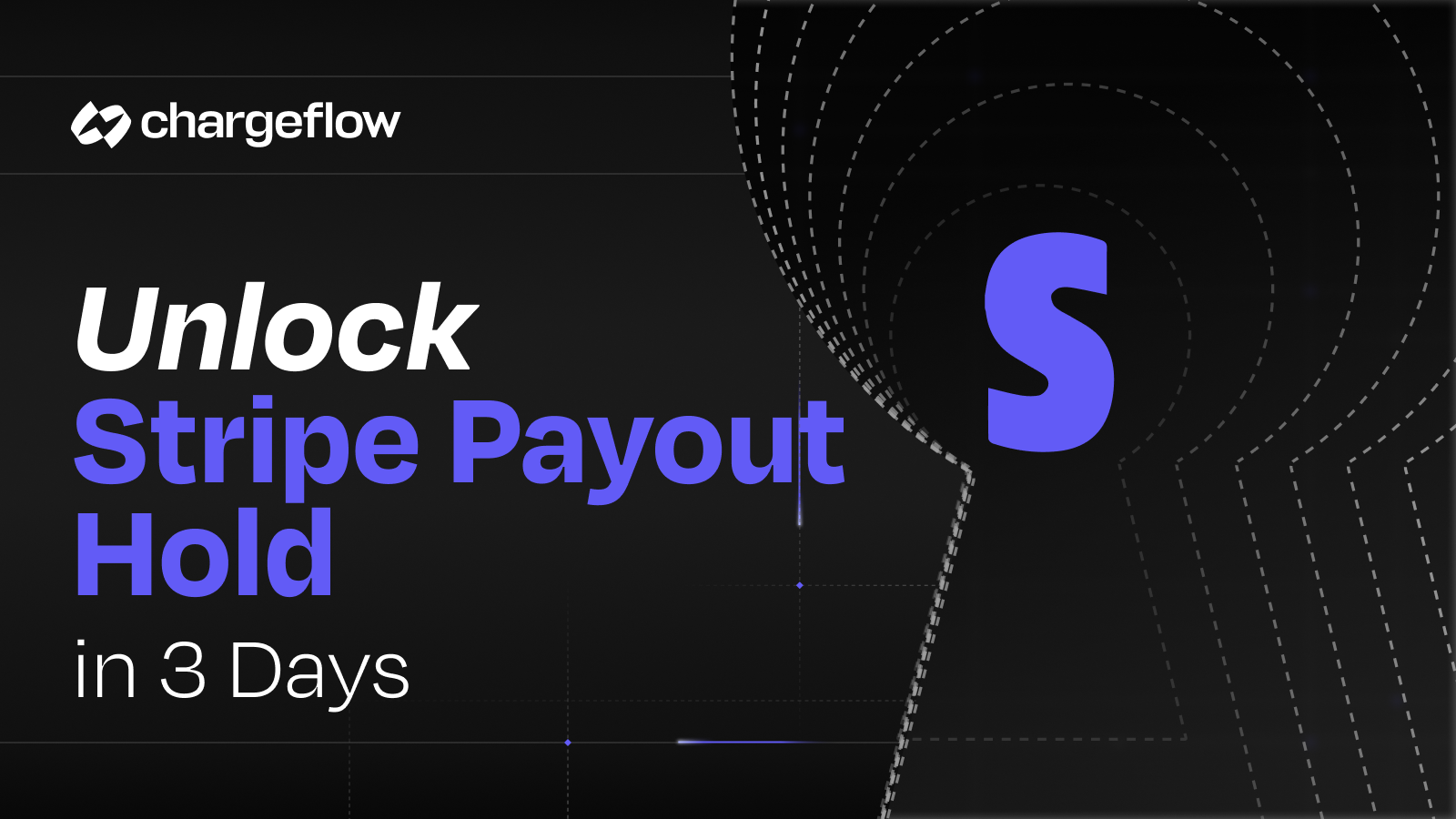How to Manage Chargebacks in High-Risk Industries: 6 Proven Best Practices

Chargebacks?
No longer your problem.
Recover 4x more chargebacks and prevent up to 90% of incoming ones, powered by AI and a global network of 15,000 merchants.
Reduce chargebacks in high-risk industries with 6 proven tips to prevent disputes, fight fraud, and protect your revenue—starting at checkout.
Credit card chargebacks can be a nightmare for businesses operating in high-risk industries like eCommerce, travel, and subscription services. Every dispute drains revenue, strains customer relationships, and pushes your chargeback ratio closer to the danger zone.
Once you cross the threshold set by payment processors, you risk higher fees, account holds, or even getting banned from accepting payments altogether.
The good news is that you can reduce chargeback rates and protect your bottom line by tightening up your processes and using tools like Chargeflow to automate prevention. Small, proactive changes at every stage of the customer journey, from checkout to delivery – can make a big difference.
This guide will walk you through six proven strategies to prevent disputes, fight fraudulent claims, improve customer communication, and build a strong case when chargeback requests do happen.
Chargebacks in High-Risk Industries
Industries like e-commerce, travel, gaming, and subscription services face higher chargeback rates compared to other sectors.
This is due to factors like fraud, customer disputes, and unclear billing practices.
For example, with fraud, a person might use stolen card details or misrepresent themselves. This is quite common, especially when there’s no in-person interaction.
Another major factor is customer dissatisfaction, which can quickly lead to chargebacks. In industries where services are intangible and difficult to evaluate (i.e., digital goods, subscriptions), customers may dispute charges simply because they didn’t get what they expected.
Chargebacks can also arise because of miscommunication or misunderstandings during the purchase process. For example, suppose a customer doesn’t fully understand the terms of an automatic renewal or the nature of a digital product. In that case, they may file a chargeback after realizing they’ve been charged.
Consider Homeaglow, a cleaning service that advertises a 3-hour cleaning for just $19 but buries the details about cancellation fees and locked-in contracts deep in the checkout process. This kind of unclear communication is a chargeback situation trigger waiting to happen.


Best Practices for Managing Chargebacks to Reduce Risk
Globally, the number of chargebacks is expected to reach 337 million by 2026, a 42% increase over 2023.
So, chargebacks are inevitable to some degree, especially in high-risk industries. But they don’t have to be crippling. You can employ different strategies to minimize the frequency and impact of chargebacks.
Implement Strong Fraud Prevention Measures
These numbers paint a clear picture of one of the biggest causes of chargebacks.
- Chargeback fraud is expected to cost merchants a little bit more than $28 billion by 2026.
- Nearly 60% of ecommerce businesses say online payment fraud is increasing.
- As many as 86% of all chargebacks are the result of “friendly fraud.”
Given the fact that a significant portion of chargebacks are from fraudulent transactions, addressing the issue before it escalates can save both time and money.
Here are some actionable tips for building a more secure digital transaction process:
- Use advanced payment authentication: Enable 3D Secure (3DS) or similar authentication methods to verify transactions. Through this extra layer of security, customers authenticate themselves through a second factor (e.g., a text message or biometric scan) before completing a purchase.
- Monitor transactions in real-time: Implement real-time transaction monitoring to spot suspicious activity as it happens. Use machine learning tools and AI-powered systems that can analyze purchasing patterns and flag unusual behavior.
- Implement address verification systems (AVS): Address verification systems (AVS) compare the billing address that the customer provides with the address on file with their bank. A mismatch can be a red flag, especially for card-not-present transactions. Use AVS as part of your business fraud prevention toolkit to help catch potential fraud.
- Track IP addresses and geolocation: Monitoring your customers’ geographical locations can help identify suspicious activity. For example, someone might make a purchase from a different country or IP address than the customer’s unusual location. You can flag these potentially unauthorized transactions for manual review or additional verification to ensure the purchase is legitimate.
- Set up transaction limits: If your business handles high-value transactions, set spending limits or implement additional checks for larger purchases. Fraudulent and unauthorized transactions often involve high dollar amounts. So, limiting these purchases without verification or extra scrutiny can help prevent chargebacks from fraud.
1. Act Quickly
The faster you respond to a chargeback, the better your chances of successfully disputing it. Payment processors and card issuers typically provide a limited window to submit evidence, usually 20-30 days. As soon as you’re notified of a chargeback, gather relevant information and start preparing your response. The evidence you’ll need might include:
- Proof of delivery (e.g., tracking numbers, shipping receipts)
- Customer communications (e.g., emails, chat logs)
- Clear and accurate billing descriptors
- Detailed records of the transaction (e.g., order numbers, amounts, dates)
2. Establish Clear and Transparent Communication
From the moment a customer begins browsing your site to the moment they check out, be upfront and transparent about what they’re buying and how you’ll charge them.
Provide detailed product descriptions, images, and clear pricing. This should include any potential add-ons, taxes, or shipping fees. Make this highly visible. If you have to, use large print. Transparency here reduces the chances of customers feeling misled or supposed when they see the charge on their credit card statement.
Other best practices to consider include:
- If your business relies on subscription-based revenue, clearly communicate the terms of the subscription services. Include how often they’ll be charged, what the charges will be, and how to cancel or modify the subscription. Send reminder emails before renewal to give customers a chance to opt-out if they no longer want the service.
- Make sure your business name or a recognizable descriptor appears on the bank statement. Avoid using generic terms like “payment gateway.” This can confuse customers, and they may initiate a chargeback request because they don’t recognize the charge based on the vague name.
- Always provide customers with a detailed invoice or receipt after purchase. This should outline the product or service, the total cost, payment methods, and any applicable taxes or fees.
- Help customers remember their purchases. One often-overlooked cause of chargebacks is simple forgetfulness. Providing invoices that can easily be uploaded into a spending app can reduce this chargeback issue. Clear documentation with your business name and the purchased item makes transaction histories easier to track—so customers are less likely to dispute charges later.
- Communicate clearly about estimated delivery times at the point of purchase and again in the confirmation email. Users are less likely to file a chargeback if they're aware what's causing the delay and are kept in the loop.
3. Partner With a Chargeback Management Service
Chargeback management services specialize in preventing, managing, and disputing chargebacks. They offer expertise and tools that can help you save time, reduce losses, and improve the overall handling of disputes.
These services also include detailed analytics and reporting. You can track chargeback data and trends over time, which gives you insights into why chargebacks occur, where they’re coming from, and how you can prevent them.
Additionally, businesses may work with insurance brokers to explore chargeback insurance options, which can provide financial protection against fraudulent transactions and high chargeback rates. This extra layer of security helps mitigate financial risks and enhances business stability.
4. Optimize Your Business Setup and Compliance
You can opt for a reduction in chargeback risks by choosing the right type of business entity for your operations. Certain structures, like LLCs and corporations, can help separate personal and business finances, giving you better legal protection in case of disputes.
If you're operating in a high-risk industry, setting up the right entity can also improve credibility with payment processors and banks, making it easier to secure favorable terms and avoid sudden account freezes.
Managing chargebacks gets even more complicated when you factor in regulatory issues like e-commerce sales tax. Many merchants don't realize how tax problems can trigger disputes until it's too late. When customers see unexpected tax charges or notice inconsistent tax collection across orders, they're more likely to file chargebacks.
Smart businesses make sure their systems handle tax calculations correctly across all the jurisdictions where they operate, making the tax amounts crystal clear during checkout. This transparency not only keeps you compliant but also prevents those frustrating tax-related disputes that eat into your profits.
5. Standardize Your Chargeback Management Process
Creating a structured process for managing chargebacks can help you improve your chances of winning disputes, prevent future chargebacks, and, ultimately, protect your bottom line. Here’s what the process should look like:
- Review chargeback reason codes. Learning the reasons for potential chargebacks helps you determine how best to approach the dispute, whether it’s fraud, product dissatisfaction, or something else.
- Gather and submit evidence. To support your case, collect all the relevant documentation, such as proof of delivery, customer communications, receipts, and transaction details.
- Contact the customer directly. Reach out to the customer to resolve the issue before escalating it to the chargeback process.
- Use chargeback representment wisely. Chargeback representment is available if you have a chance to contest the dispute with solid evidence. Submit your case to the payment processor, meet deadlines, and provide all required documentation.
- Monitor chargeback tracking. Use chargeback tracking tools to stay informed about the status of each dispute.
- Follow up with your payment processor. Maintain regular communication with your payment processor to ensure your case progresses.
- Keep detailed records of chargeback activity. Track every chargeback case, including reasons and outcomes, to identify recurring issues and trends.
- Evaluate your chargeback ratio. Track your chargeback ratio to avoid penalties and account restrictions. And re
- Consider arbitration if necessary. If representment and direct resolution don’t work, arbitration can be the final step. Although costly, it offers a third-party review of the case for a final decision.
Don’t want to go through all these steps every time? Consider using an automated chargeback management tool. These platforms help businesses improve win rates by analyzing chargeback data. They also offer automated dispute resolution, real-time reporting, and enhanced data collection to help you maximize recovery rates.
You can also set the level of chargebacks that’s acceptable for your business. This is your target chargeback rate or dispute rate. From there, you’ll get alerts based on this rate, which helps you stay ahead of any potential issues.

6. Leverage Dispute Resolution Programs
Dispute resolution programs can streamline your chargeback process and increase your chances of winning disputes. Many payment processors, card networks, and banks offer these services.
You’ll gain access to tools that help you gather and submit the correct evidence in response to a chargeback. You’ll also get guidance on what types of documentation you need, which ensures you don’t miss any key pieces of evidence.
Dispute resolution programs also help speed up the time it takes to resolve a case. The faster you resolve a dispute, the sooner you can either recover your funds or take necessary steps to mitigate the issue.
Master Chargeback Management With These Proven Strategies
For an effective chargeback management strategy, you need an approach that tackles both the root cause and aftermath.
That’s because even with the best preventive measures, potential chargebacks can still happen. This is why having a streamlined process to respond quickly and effectively is so important.
The key is to treat chargeback challenges management as an ongoing strategy and take a proactive approach. With the right technology and best practices outlined in this post, you can stay ahead of disputes and keep your business running smoothly.

Chargebacks?
No longer your problem.
Recover 4x more chargebacks and prevent up to 90% of incoming ones, powered by AI and a global network of 15,000 merchants.






























.png)








